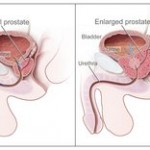What is prostatitis?
Prostatitis is swelling of the prostate gland, a gland about the size of a walnut just below a man’s bladder. The prostate contributes to the liquid portion of semen (ejaculate). Prostatitis has a number of causes, but the primary signs are pain and difficult urination. Prostatitis can be acute or chronic.
What are the symptoms of prostatitis?
Prostatitis is when the prostate gland becomes inflamed or swollen. Prostatitis symptoms may include:
- Abnormal urination: painful, burning, difficult, dribbling/hesitant, or frequent
- Pain: back, groin, abdominal, perineum (area between the scrotum and the rectum), penis, testicles, during orgasm
- Flu-like symptoms
What causes prostatitis?
Chronic and acute bacterial prostatitis are caused by bacterial infections. The exact causes of non-bacterial prostatitis — chronic pelvic pain or chronic abacterial prostatitis — are unknown. Other causes of prostatitis may include:
- Immune or nervous system problems
- Direct injury to the prostate
- Defective nerve and/or muscle function
- Blockage of the urinary tract
- Build-up of toxic chemicals in the urine
How is prostatitis diagnosed by my doctor?
A diagnosis of an inflamed prostate can be made based on the medical history and physical exam of a patient. These tests can identify several possible risk factors of prostatitis, including:
- Being young or middle aged
- Not drinking enough liquids
- Being under a lot of stress
- Genetic predisposition
- Nerve problems
- Stroke
- Parkinson’s disease
- Multiple sclerosis
- Diabetes
- Radiation from cancer treatments
Your doctor will perform a digital rectal exam, which can detect inflammation and tenderness of the prostate. Further tests are required to identify the specific type of prostatitis: urine, blood, and semen tests can detect an acute or chronic bacterial infection. These medical tests for an inflammation of the prostate gland can also rule out conditions that cause similar symptoms:
- Overactive bladder
- Benign prostatic hyperplasia (BPH)
- Post-bladder cancer
- Urethral stricture
- Narrowing of the penis meatus
How does an acupuncturist diagnose prostatitis?
An acupuncturist’s main mode of diagnosis is inquiry. Basically, we ask a lot of questions to figure out what’s going on. I never perform digital rectal exams in my clinic. Men who seek treatment will either already have a diagnosis by a doctor, or will have symptoms that fit the bill. If symptoms persist, and a patient has not been to a doctor, I will refer to a urologist to make a diagnosis and rule-out other problems. More recently, urologists have begun to refer their patients out for acupuncture to help treat the symptoms of prostate inflammation, like problems with urination.
As part of an intake interview with an acupuncturist, we will discuss not only the symptoms you are having related to inflammation of prostate, but also about your health in general, lifestyle and diet, so I can get a better understanding of the whole you. I treat people, not diseases.
How is prostatitis treated by a doctor?
Treatment of prostatitis depends on the underlying cause. Treatments may target the cause or the symptoms of an inflamed prostate (like problems with urination) and may include:
- Antibiotics—oral or intravenous—to treat prostatitis caused by a bacterial infection
- Drugs called alpha blockers relax the area where the prostate and bladder meet and help alleviate painful urination
- Over-the-counter pain relievers also help with pain
- Prostatectomy is surgery to remove all or part of the prostate
How does acupuncture treat prostatitis?
By piecing together the signs and symptoms, I identify a pattern of disharmony. Patterns are how Chinese medicine quantifies and qualifies illness. The names of patterns often have words we recognize from high school biology class about internal organs. This isn’t a direct correlation, so don’t get caught up in the name or what it might mean.
Acupuncturists use the pattern diagnosis to dictate the treatment plan. The treatment will involve acupuncture and herbs to unwind the disharmony of the pattern to restore balance to the body. I also use dietary therapy and tui na massage to support these modalities. I often give patients a bit of homework in the form of self-massage to be used as a treatment between acupuncture appointments.
To make an appointment with me for treatment, please go to the Appointments page. If you have further questions, feel free to ask me through the Contact page.

